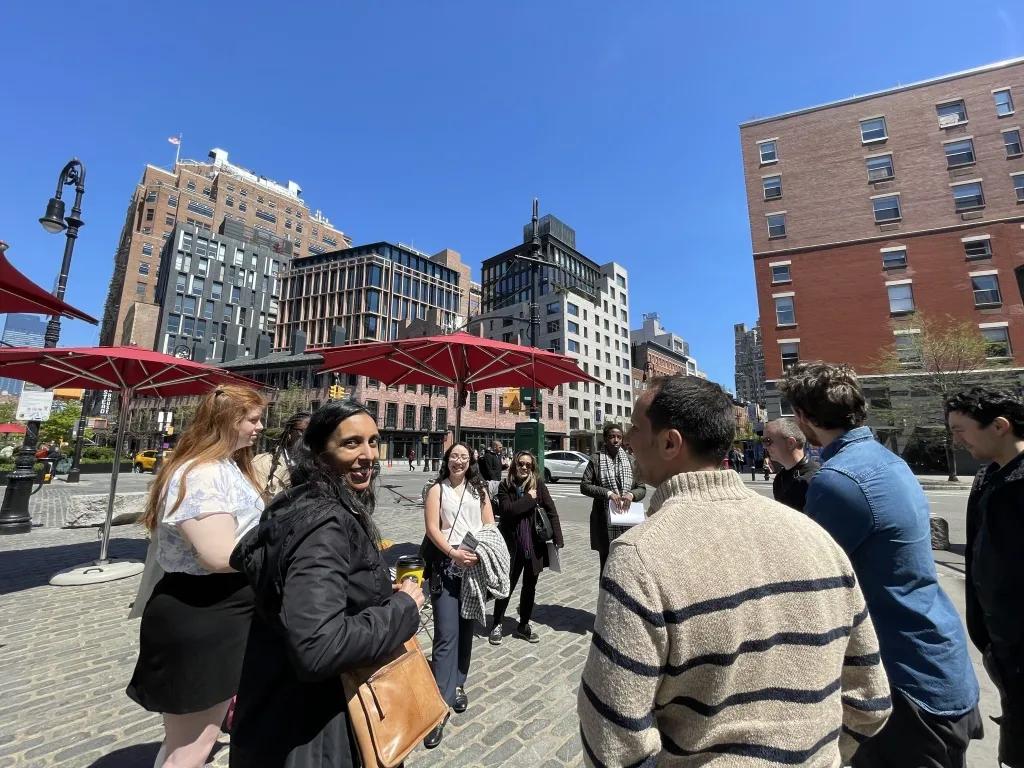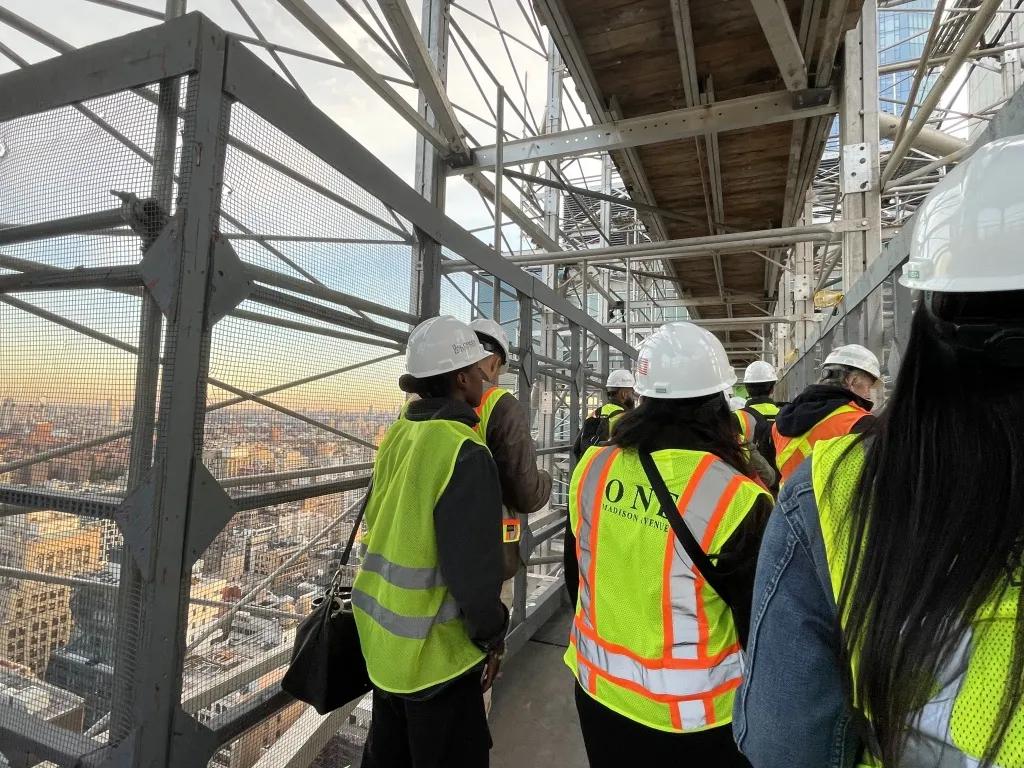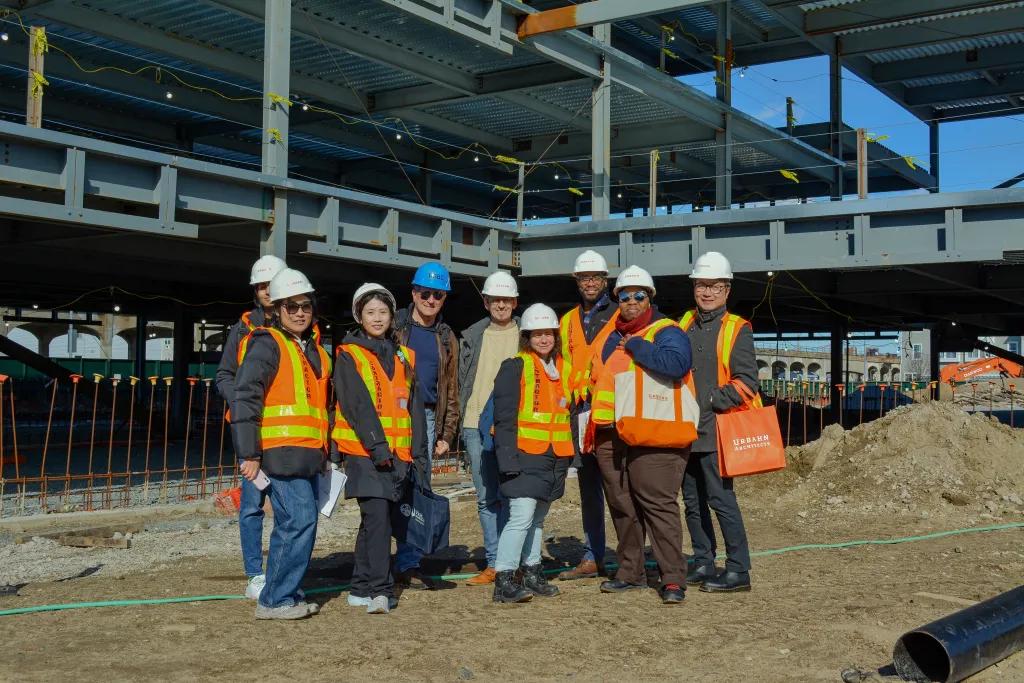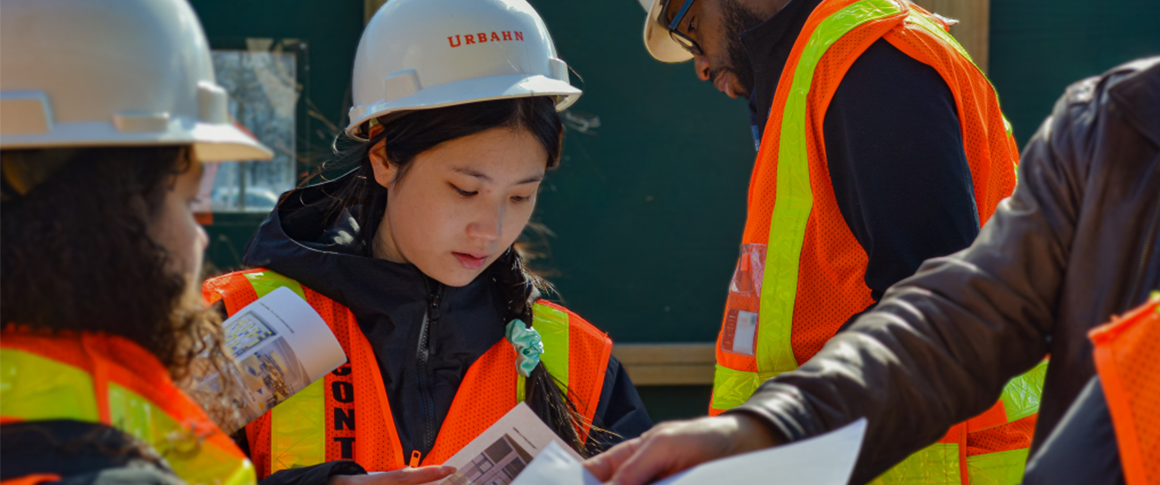Earning experience in all of the areas needed to complete the Architectural Experience Program® (AXP®) can be challenging. Licensure candidates are often limited by the projects and tasks assigned to them by their supervisor. Many candidates report that earning experience in the Construction & Evaluation (CE) area can be especially difficult, since some firms choose not to take on construction administration work.
The New York Coalition of Black Architects (nycoba) | New York National Organization of Minority Architects (NOMA) chapter is working to ensure that all candidates have access to the opportunities they need to complete the AXP and advance their career. Created by architects Ijeoma D. Iheanacho, NOMA, AIA, LEED AP, and Kavitha Mathew, AIA, NOMA, LEED AP, the OnSite program offers regular access to CE experience through supervised site visits, which fall under the AXP’s Setting O: Site Visit With Mentor. Learn more about nycobaNOMA’s innovative OnSite program and how you can create a similar program near you!
Can you explain what nycoba|NOMA OnSite is and how it works? How does this program benefit emerging professionals?
Ijeoma D. Iheanacho (IDI) and Kavitha Mathew (KM): The OnSite program was created to offer new opportunities for AXP candidates to pursue the CE credits required to complete the AXP. This program invites AXP candidates to visit projects in various phases of construction during tours led by licensed architects in partnership with their construction teams. Emerging professionals are given the opportunity to gain firsthand experiences that may not be available to them through their everyday practice, while the firms that host are able to highlight and celebrate their amazing projects.

Walk us through one of your recent site visits—what does a tour look like?
IDI: A tour typically looks like a gaggle of architecture nerds poking their noses into the nooks and crannies of a project in various phases of construction. Before the visit, the attendees receive preliminary information about the project and the site, including safety protocols. Upon arrival, the registered architect leading the visit provides an overview of the program, the phase of construction completion, and other interesting details about the building. Handouts for attendees may include floor plans, details and sections or initial concept sketches. While taking the attendees through the site and building, the lead architect will highlight any areas of interest and take questions from the emerging professionals. Either Kavitha or I, trading off per our schedules, are present to help the tour go smoothly and provide the mentorship credits to the attendees as necessary. The tours are typically limited to 10-14 participants, with AXP candidates getting preference in attendance.
KM: On the KPF-led tour of One Madison, we started across the street from the building to provide the site context and best views of the project before riding the hoist to one of the upper floors and working our way down to see various levels of completion of the curtain wall, mechanical equipment, terraces, typical office and amenity spaces, as well as the adaptive reuse of existing building core and structural elements. Finally, we visited the below-grade mechanical and support spaces and the partially finished lobby interior.

What inspired you to create the OnSite program?
IDI: While brainstorming various programs for the nycobaNOMA Professional Development Committee, we wanted to focus on ways for firms to engage with our members. Kavitha suggested a tour of a KPF project, suggesting we open the tour to nycobaNOMA members to participate. The initial thought was “firms host tours of their projects,” which evolved to, “firms could host tours of their projects under construction.” I thought that was a fantastic idea but wanted to expand on that opportunity.
I suggested we find out if time spent on the tour would be able to count toward the CE AXP requirement. Creating this opportunity was important to both Kavitha and me when we recall the struggles we went through to put together our Construction Administration hours for Intern Development Program (IDP, as it was called back then). We thought an opportunity like this could be beneficial to as many AXP candidates as possible. Kavitha quickly worked with her NCARB contacts to solidify a path forward for the program. The AXP Setting O opportunity “Site visit with Mentor” seemed to be the best way to go, and we initiated the first tour with KPF.
You’ve seen especially high turnout to your site visits from women of color. What makes the OnSite program so important from a diversity, equity, and inclusion perspective?
KM: OnSite was made specifically with nycobaNOMA members in mind, many of whom are POC, so the program is already geared toward those from backgrounds underrepresented in the field of architecture. Additionally, women of color are the least represented as well as one of the groups least likely to get the variety of experiences needed to complete their AXP and ultimately get licensed. OnSite is filling a true gap in the industry.
Ijeoma and I felt connected through this specific challenge we both faced when we went through the process. It is why we are so passionate about creating and growing the program through nycobaNOMA, garnering support from partnering firms, the wider industry, other NOMA chapters and from NCARB. And on a personal note, after 20 years of more traditional practice, I shifted my efforts to working on increasing diversity, equity, and inclusion in architecture. This program exemplifies how we can create opportunities by working together.

What has your experience been like when it comes to coordinating with architects from various firms to create this program?
KM: We have had a learning curve since the first two sessions were hosted by our own firms (KPF & Urbahn). There were things that we simply understood needed to happen. Since then, we have expanded our communication and developed a detailed protocol to assist with scheduling, planning and outreach. Each tour is a learning opportunity to make the process more efficient and impactful.
Do you have any advice for professional chapters or firms interested in launching a similar program?
IDI: Absolutely—just do it! We will be speaking at the 2024 NOMA conference in Baltimore this October, where we will be encouraging other NOMA chapters to take on this program. Anyone interested should definitely stop by our session on Thursday the 24th at 2:30. We will be discussing the step-by-step process for how local chapters can bring this program to their communities.
As the 2023-2024 President of nycobaNOMA, I am extremely proud of the OnSite program and its rapid growth since its inception last year through Kavitha and Ijeoma’s vision and dedication. OnSite is a wonderful alignment of nycobaNOMA’s values of mentorship and access to professional development opportunities for diverse emerging architects, and NOMA’s continued partnership with NCARB for a collective commitment to breaking barriers to licensure.
—Allison Lane, nycobaNOMA President
What’s the best way for New York City-area firms and emerging professionals to get in touch with you about participating in nycoba|NOMA OnSite?
IDI+KM: Anyone interested in learning more can contact us via the nycobaNOMA Professional Development Committee at professionaldevelopment@nycoba.org.
